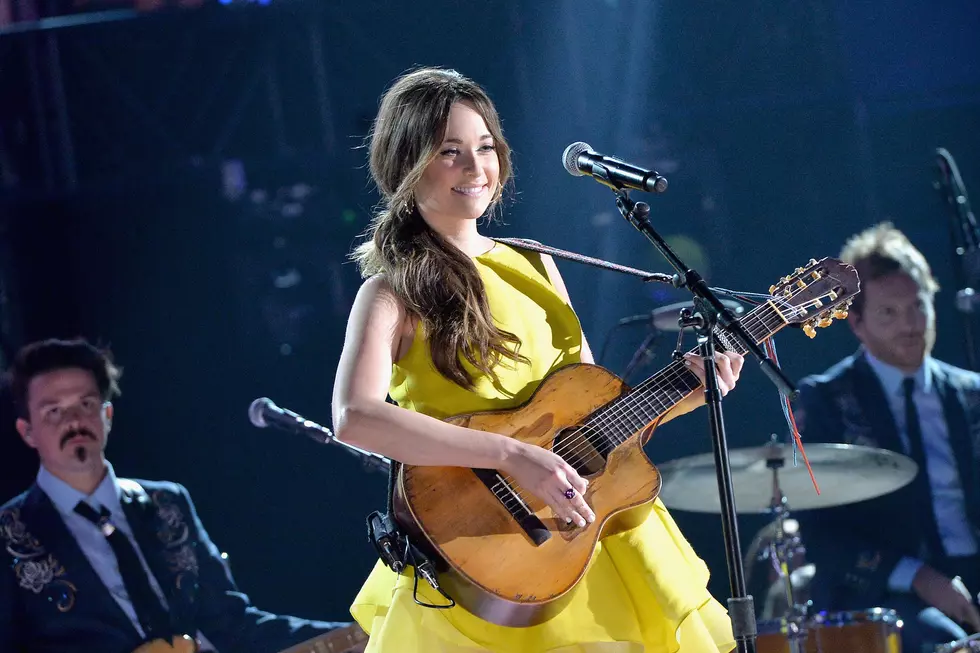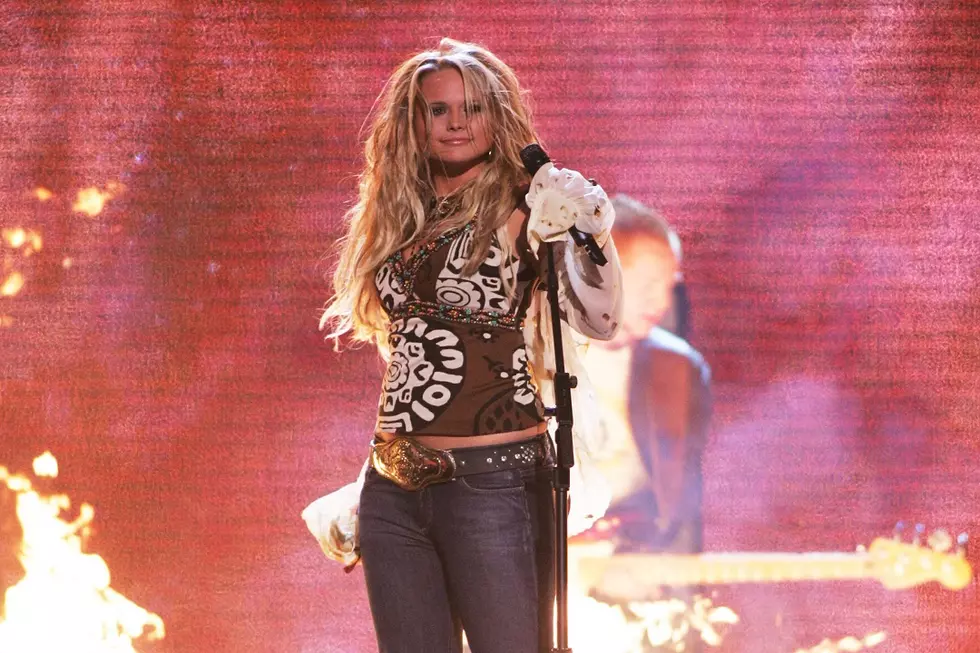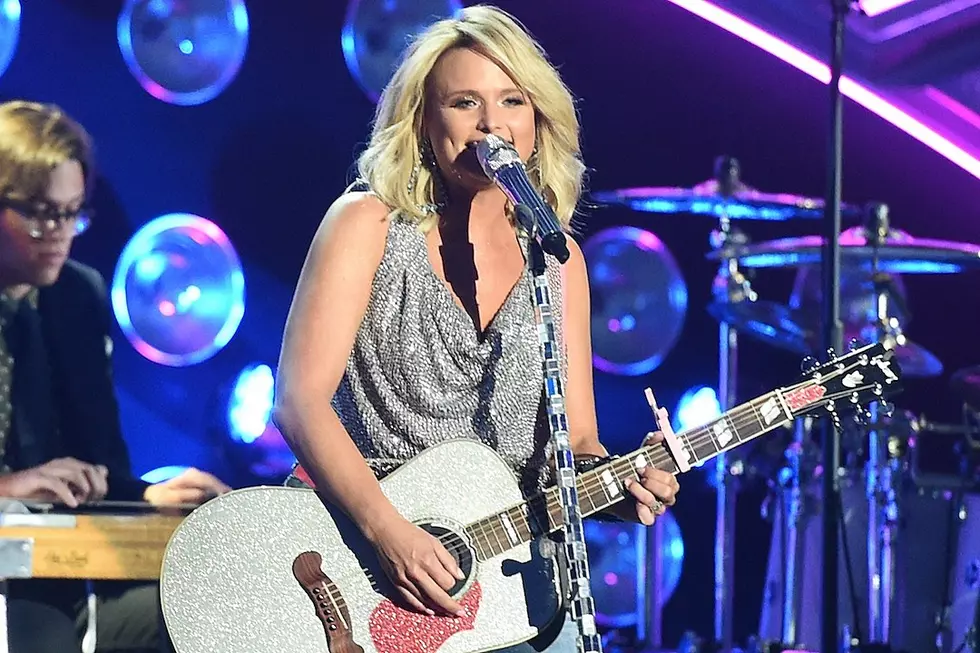
Why Are There So Few Women at Country Radio?
Some of the most important artists in country music today are female -- but you might not suspect that from listening to country radio.
Women have dominated much of the last 12 months in country music, releasing some of the most impactful albums of the year -- except commercially.
It's been the subject of much discussion both within and without the Nashville industry, with everyone from Billboard to NPR weighing in on the puzzling statistics. But there seems to be little more light at the end of the tunnel than there was a year ago today for female artists who are trying to compete with men at country radio.
Carrie Underwood, Miranda Lambert and Taylor Swift are among the only female artists who have scored major success at country radio recently, as the genre has become even more dominated by "bro country" artists like Jason Aldean, Luke Bryan and Florida Georgia Line.
Kacey Musgraves, Ashley Monroe and Brandy Clark released three of the most critically acclaimed albums of 2013, but only Musgraves has had a Top 10 hit, and she's so far proven unable to follow it up. That didn't stop her from winning an armload of awards for her major label debut, 'Same Trailer Different Park,' including a Grammy for Best Country Album.
The country music business is almost entirely male-dominated, especially at a decision-making level. Most of the record label executives are men, and most of the radio program directors are men, too.
So if women are driving the marketplace in so many ways in terms of the quality of the work they are releasing, why are they not getting more airplay?
It's a multi-faceted question, and the most obvious part of the equation may be as simple as this: the country music business is almost entirely male-dominated, especially at a decision-making level. Most of the record label executives are men, and most of the radio program directors are men, too.
That may seem to suggest an answer as simple as out-and-out sexism, but it's much more complicated than that. The truth is that the demographic for country music is predominately female, which leads many to argue that if radio played more female artists, it would appeal to women more.
But that's not the thought process in the business. The prevailing argument in the industry appears to be, if we're marketing primarily to women, then we need to be marketing male artists that they will find attractive and relatable. That's part -- but only part -- of the explanation behind the rise of artists like Bryan, Aldean, Florida Georgia Line and more.
The other, far more important part is -- as always in the music business -- money. The simple fact is, it's not the job of radio to provide exposure for the highest-quality songs in the genre. It's the job of country radio to draw as many listeners to their stations as possible, and keep them listening for as long as possible, so they can present bigger numbers to potential advertisers, which in turn means they can charge higher rates for ads. Higher ad rates mean more profit for the station, which is, after all, a for-profit business.
That works in concert with the record labels, who have to try to assess how best to market their artists in light of the current radio environment. Since commercial country radio is still the easiest way to mass market an artist, we're seeing a trend now where artists are altering their approach to recording in response to trends at radio.
It's always been that way, of course -- go back and listen to any of your favorite albums from the '80s and '90s, and chances are they contain some production elements that sound dated now, but were part of an industry trend at the time of their release. But we're also seeing this get tied in with touring, which has become an even more vital part of the overall bottom line for artists as song revenue has been dramatically impacted by illegal downloading.
As a result, we're seeing more and more artists develop a career plan that emphasizes touring as much as possible in the biggest venues possible, which then forces them to craft songs that are designed for that environment. As more and more artists place greater emphasis on performing in arena-sized venues, there's a definite shift toward writing and cutting songs that are intended specifically to play in arenas -- a performing environment that doesn't really lend itself to subtly nuanced, introspective ballads, for instance.
That may well be one reason why Swift, Lambert and Underwood are all doing so well when so many other female acts are not.
There's a definite shift toward writing and cutting songs that are intended specifically to play in arenas -- a performing environment that doesn't really lend itself to subtly nuanced, introspective ballads, for instance.
Swift's recent Red Tour set a new record for the most successful country tour in history, and she has certainly shifted her focus in recent years to songs that can play in a bigger environment, which allows her to design spectacular live shows that are hugely entertaining visually, featuring special effects, dancers and even aerialists. Music is just one part of that equation, and there's hardly any getting around the fact that it's probably easier to get an arena full of people excited with material like 'We Are Never Ever Getting Back Together' than with 'White Horse' or 'Teardrops on My Guitar.'
Underwood is another performer who has placed increasing emphasis on visually stunning live shows, and has gradually changed her approach over time to record songs like 'Blown Away' that will come off better in larger venues. And while Lambert doesn't go in for that high-tech approach to the same degree, she definitely leans toward more up-tempo songs, and performs them with a manic energy live that allows her to succeed in bigger places.
"Bro country" is ideally suited to those larger places, since most of its appeal is arguably in the music and particularly the rhythm track, as well as the spirit of fun in those songs. That's a much better fit for tens of thousands of people tailgating and getting crazy in a huge setting, and it's no surprise that artists like Bryan, Aldean and more are benefiting from that and breaking through to the largest concert venues in the country.
While they're not exclusively female, we're also seeing female-fronted acts like Lady Antebellum and the Band Perry shift their focus away from songs like 'Need You Now' and 'If I Die Young' and toward fare like 'Bartender' and 'Chainsaw,' which might be more likely to play well in the bigger settings in which those acts now find themselves. And as acts are able to book larger and larger gigs, there's more of what the business calls "event power" around each gig -- more excitement for more fans, which makes it easier for the local radio station promoting the gig to get fans engaged in ticket giveaways, contests and the like.
That's better for the stations, who naturally reward those artists by playing their songs more -- which then sends a signal to other artists that they need to switch up their approach to get similar results. So even though they're seemingly unrelated, the radio stations, labels and managers are actually all working in tandem toward a common goal -- that of exploiting artists in the commercial marketplace for as much profit as possible. Naturally, they're going to do that by emphasizing whatever kind of music appears to be getting the best marketplace results during any given album cycle.
That tends to leave out artists like Musgraves, Monroe or Clark. It's a difficult scenario for them in that the quality and challenging nature of their work may actually play against them getting more air time at commercial radio.
Take Musgraves, for example. Her first major label single, 'Merry Go 'Round,' was a Top 10 hit, and it helped her album debut at No. 1. The second single, 'Blowin' Smoke,' missed the Top 20.
For her third single, Musgraves chose the extremely provocative 'Follow Your Arrow,' despite the fact that it addresses hot-button topics like same-sex relationships and marijuana use that are still widely seen as taboo issues for much of country's more conservative fan base. Predictably, many radio programmers simply chose not to play it at all, rather than risk potentially offending their listeners. The song stalled outside the Top 40, and subsequent singles have so far failed to re-capture her initial heat at radio.
Even though they’re seemingly unrelated, the radio stations, labels and managers are actually all working in tandem toward a common goal — that of exploiting artists in the commercial marketplace for as much profit as possible.
So far Monroe -- whose album 'Like a Rose' slants heavily toward a traditional take on country music -- has charted with just one of her singles, 'Weed Instead of Roses,' which squeaked into the Top 40 at No. 39, while Clark -- who's signed to a smaller label that simply doesn't have the financial resources to compete on a level playing field at country radio -- has had most of her success via alternate marketing means like satellite radio.
The reality for artists of that caliber is simply this: it's easier for someone to get hammered and put their fist in the air at a huge arena gig to the sounds of the latest hick-hop hit than it is to the strains of a better-written, more subtly nuanced song from a writer of greater substance -- which makes it easier to exploit that kind of music for money. Which is what the music industry does for a living.
The main thing a fan can do is (legally) download music from the artists they like, which sends a message to the labels and radio that supporting those artists could be good business. Don't just complain there's nothing you like -- get engaged, get involved, call your local radio station and ask for what you want, and let them know you want and would support higher fare.
In the meantime, instead of complaining about the lack of women at country radio, let's focus on the fact that female artists are creating such strong work right now, and celebrate the fact that we as fans get to access that work online, via satellite radio, NPR and especially through attending live shows by those artists. We're lucky to be living in an age and time when we don't have to sit around waiting for a song we like to come on the radio -- we can go find whatever we want, whenever we want, and that winds up providing enough financial support for those artists to make a good enough living to continue doing what they're doing.
And that's a good thing, not a bad thing.
More From TheBoot









